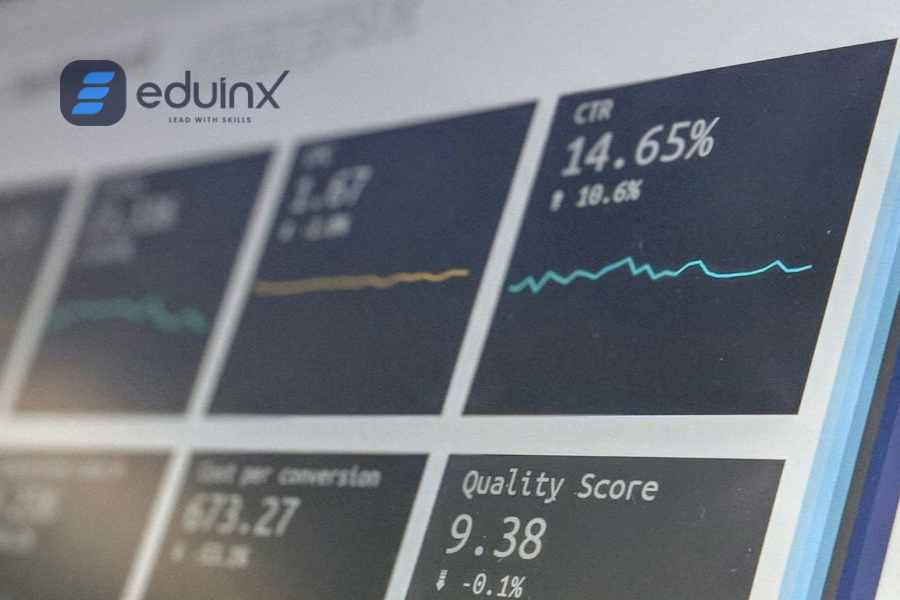Introduction
With generative AI becoming the new normal in today’s competitive landscape, organizations are proactively hiring gen AI and data science professionals on a large scale. Regardless of which industry you are working for, data plays a crucial role in making critical decisions to ensure the sustainability of businesses. Professionals and freshers who are new to the industry need to have a good grip on data to support organizations and clients in making data-driven decisions that ensure profitability. Learning the applications of gen AI in data analytics will help you scale up your career and become a valuable asset in the market. Before taking up a generative AI and data analytics course, you need to understand these nine practical applications of gen AI in data analytics.
Personalized Marketing Campaigns
Generative AI can be integrated with analytics platforms that analyze the market trends and performance of a business using metrics. This AI system does an in-depth analysis of the metrics and suggests unique methods to optimize the marketing strategy to ensure the best results. It increases the speed of creating new marketing materials in content creation and social media campaigns. Gen AI can be combined with advanced analytics and extended tool selection for effective campaign management. This empowers data science engineers to adjust campaign intensity and offer personalized content to retain customers. For instance, if a customer is planning to cancel a subscription, the algorithm sends special offers and personalized content with re-engagement emails.
Predictive Analytics
Did you know that Gen AI in data analytics plays a crucial role in simulating various scenarios to generate possible future outcomes with improved predictive analytics? While a traditional predictive model depends on historical data to forecast future trends, predictive analytics can be deployed to predict future outcomes with data based on the information given by the user. A healthcare service provider can incorporate gen AI in data analytics to determine the busiest times of the year when more patients visit the hospital. This can help them determine how many doctors/nurses to hire during such times. In finance, predictive analytics can be used to simulate market conditions and develop a robust trading strategy. They can also mitigate market risks by simulating various economic conditions and developing an appropriate marketing strategy.
Data Augmentation
Another important application of generative AI is that it improves the performance of machine learning models while dealing with limited datasets. It creates synthetic data that mimics the characteristics of the original data to fill gaps and balance class distributions in training data sets. In this way, data science professionals can generate additional data points that flow in the same statistical patterns as the real data. This enhances the diversity and robustness of the data set, establishing data-driven decisions. In healthcare, generative AI can be used to produce synthetic patient records to supplement small data sets. Predictive models can be trained for effective disease diagnosis. With synthetic data that mirrors real patient data, healthcare providers can improve the accuracy of diagnostic tools for the best outcome.
Scenario Simulation
Scenario simulation is a phenomenal application of generative AI as it helps simulate real-world scenarios to enable data science engineers to test hypotheses, improve predictions, and study risks without having to collect or compile data. Gen AI creates synthetic data that represents various crisis scenarios, enabling the banking and financial sectors to stress-test their models and prepare an appropriate risk mitigation strategy. In the automobile industry, gen AI is widely used to test autonomous vehicle responses to rare driving scenarios through simulation. This helps in developing more reliable autonomous driving systems and customized ADAS features.
Data Lifecycle Management
Did you know that gen AI can streamline data lifecycle management through many methods? It achieves this by web scraping, transactional data extraction, and schema interface. Generative AI systems can improve data integration with entity resolution, schema mapping, and data unification for optimized data transformation with data cleansing and mapping. It also supports data discovery with clustering, visualization, anomaly detection, profiling, and conversational interfaces. In manufacturing, generative AI can seamlessly integrate production data from various sources for a comprehensive analysis. This improves the efficiency of manufacturing and proactively identifies areas for optimization.
Anomaly Detection
A generative AI model can learn normal patterns and behaviors of a dataset and identify deviations from these norms with improved accuracy. Unlike traditional methods that rely on predefined rules or simple statistics, gen AI models can handle high-dimensional data, making them efficient at identifying subtle anomalies. In cybersecurity, data engineers use gen AI to monitor network traffic to detect unusual activities that indicate a security breach. Did you know that gen AI models continuously learn from data and adapt to new types of anomalies? This makes them best suited for cybersecurity applications.
Data Imputation
Did you know that gen AI models can help telecom companies to predict missing call data records to improve customer behavior and churn prediction models? This empowers companies to develop better employee retention strategies. Generative AI models can predict and impute missing values by understanding the underlying patterns in the dataset. This ensures accurate analysis with complete reliable datasets.
Feature Engineering
Feature engineering in data analytics involves creating new variables that can improve the performance of predictive models. Gen AI can automate this process by analyzing data and identifying complex relationships and patterns that may be challenging for humans to decipher. This ensures an enriched dataset with deep insights into the underlying data structures by generating new features that capture these patterns. Banks can use gen AI to create new features based on the transaction history and customer behavior. This establishes accurate credit scoring and fraud detection. Banks can also use this feature to analyze transaction data and generate features that indicate creditworthiness like customer’s spending patterns and repayment behaviors.
Data Visualization
Uncovering valuable insights by categorizing and segmenting data is now a breeze with generative AI. Analyzed data can now be translated into visually appealing charts, graphs, and visualizations with generative AI models. These visualizations can be tailored to suit different needs and preferences. Data visualization helps a layman to understand complex data through a simple pictorial representation. In retail, generative AI models can develop visualization to track inventory levels, sales performance, and gauge employee KPIs. This empowers retailers to make more informed decisions.
Now that you have understood the applications of gen AI, you can take up Eduinx’s data science with generative AI course. Eduinx is an established institute in the edutech space. With experienced professionals and skilled tutors, you can perform assignments and avail career support with the touch of a button. In this course, you can learn about machine learning, work with big data, and understand advanced data analytics through our lectures. Discuss with industry experts and clear your doubts. Get in touch with Eduinx for more information on the course.
Reference links:
https://www.linkedin.com/pulse/practical-applications-generative-ai-data-analytics-n-ix-tbeoc/ https://www.luzmo.com/blog/generative-ai-for-data-analytics




